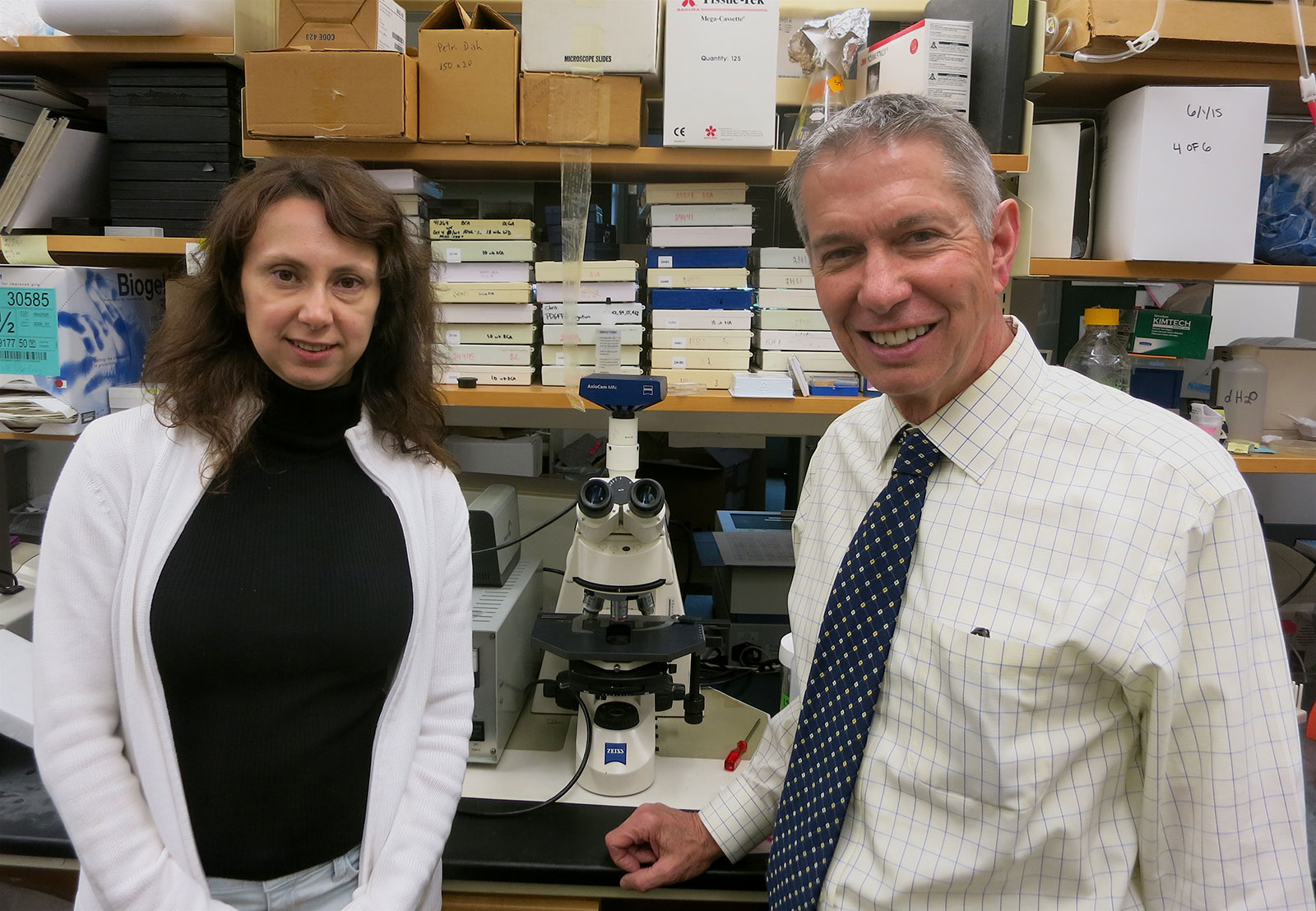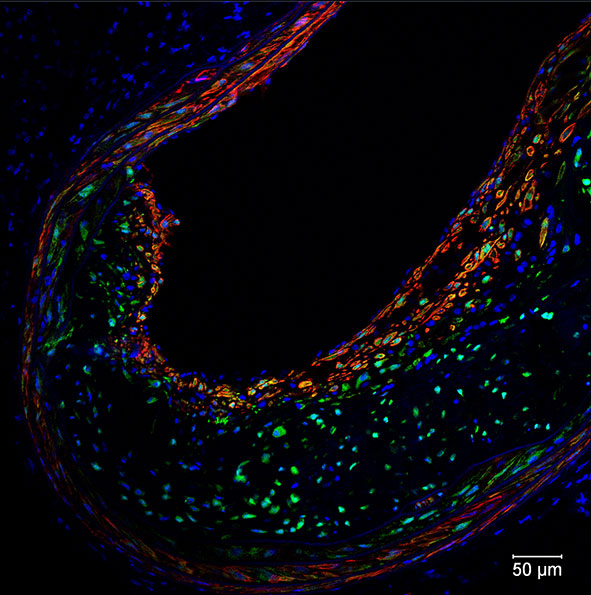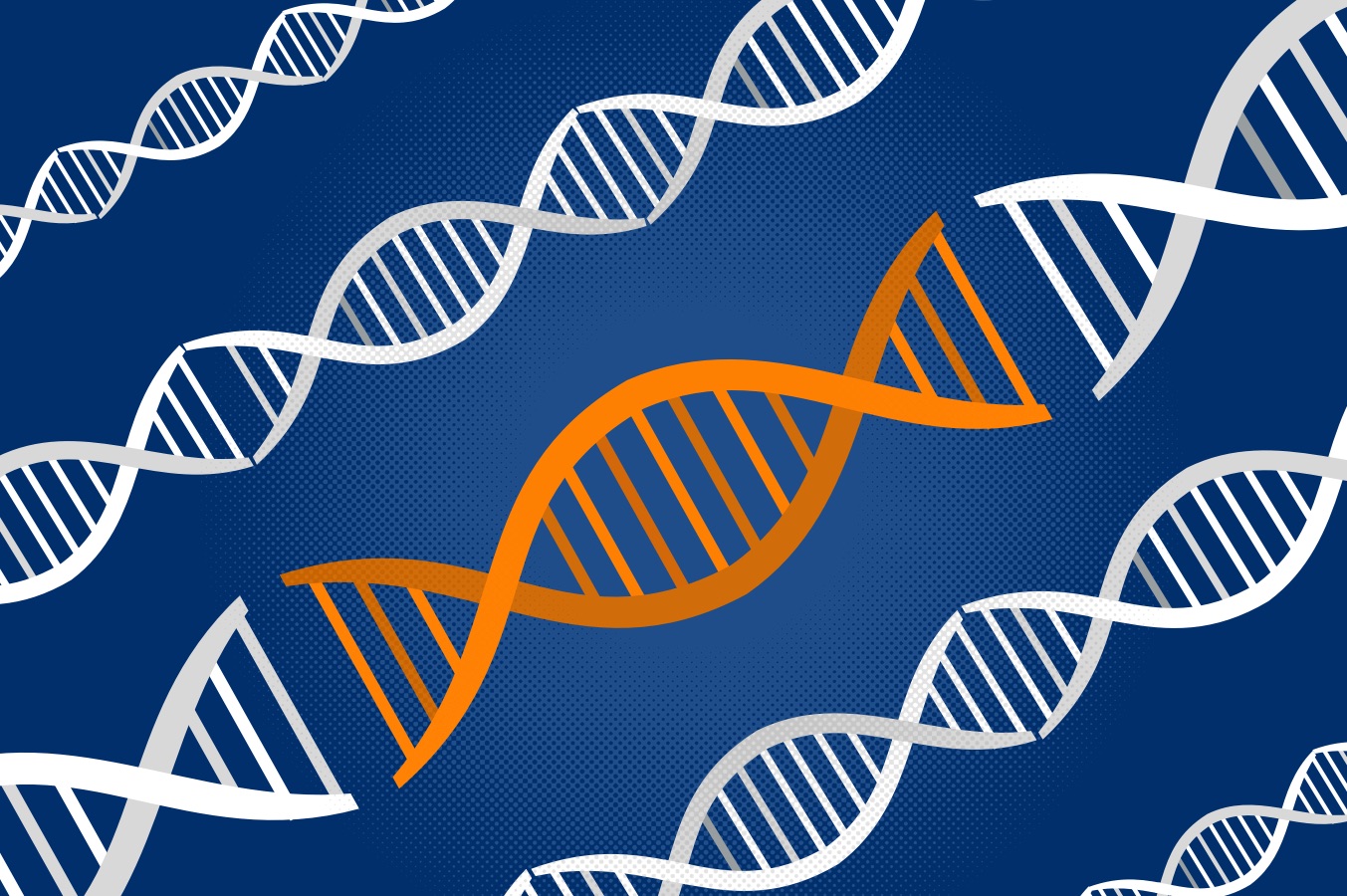A gene that scientific dogma insists is inactive in adults actually plays a vital role in preventing the underlying cause of most heart attacks and strokes, researchers at the University of Virginia School of Medicine have determined.
The findings open a new avenue for battling those deadly conditions and raise the tantalizing prospect that doctors could use the gene to prevent or delay at least some of the effects of aging.
“Finding a way to augment the expression of this gene in adult cells may have profound implications for promoting health and possibly reversing some of the detrimental effects with aging,” said researcher Gary K. Owens, director of UVA’s Robert M. Berne Cardiovascular Research Center.

UVA researchers Olga A. Cherepanova and Gary Owens are exploring the role of the Oct4 gene, which was thought to have been inactive after embryonic development, but may play a key role in preventing many diseases of aging.
The gene, Oct4, plays a key role in the development of all living organisms, but scientists have, until now, thought it was permanently inactivated after embryonic development. Some controversial studies have suggested it might have another function later in life, but the UVA researchers are the first to provide conclusive evidence of that: Owens and his colleagues have determined the gene plays a critical protective role during the formation of atherosclerotic plaques inside blood vessels. The rupturing of these plaques is the underlying cause of many heart attacks and strokes.
The researchers found that Oct4 controls the movement of smooth muscle cells into protective fibrous “caps” inside the plaques – caps that make the plaques less likely to rupture. The researchers also have provided evidence that the gene promotes many changes in gene expression that are beneficial in stabilizing the plaques. This is exciting, because studies suggest that it may be possible to develop drugs or other therapeutic agents that target the Oct4 pathway as a means to reduce the incidence of heart attacks or stroke.
“Our findings have major implications regarding possible novel therapeutic approaches for promoting stabilization of atherosclerotic plaques,” said Olga A. Cherepanova, a senior research scientist in Owens’ lab.
One surprising finding from UVA’s research: When the researchers blocked the effect of Oct4 in mice, they thought the atherosclerotic plaques might become smaller, because of the reduced number of smooth muscle cells inside. Instead, the plaques grew larger, less stable and more dangerous, stuffed with lipids, dead cells and other damaging components.

The Oct4 gene plays a role in stabilizing atherosclerotic plaques like this one, which, if they rupture, can cause heart attacks and strokes.
While UVA’s research has focused on how Oct4 offers cardiovascular protection, Owens and his colleagues believe the gene could also prove critical to the field of regenerative medicine, which investigates the growth and replacement of tissues and organs. The researchers believe that Oct4 and its family of target genes are activated in other somatic cells – the non-reproductive cells in the body – and play a key role in the cells’ ability to repair damage and heal wounds. Studies to test this are underway in Owens’ lab.
Oct4 is one of the “stem cell pluripotency factors” described by Dr. Shinya Yamanaka of Kyoto University, for which he received the 2012 Nobel Prize. His lab and many others have shown that artificial over-expression of Oct4 within somatic cells grown in a lab dish is essential for reprogramming these cells into induced pluripotential stem cells, which can then develop into any cell type in the body or even an entire organism.
The UVA researchers suspect that at least some of the detrimental effects of aging, including the increased possibility of a plaque rupture, stem from a decrease in the body’s ability to reactivate Oct4.
“Finding a way to reactivate this pathway may have profound implications for health and aging,” Owens said. “We think this is just the tip of the iceberg for controlling plasticity of somatic cells, and this could impact many human diseases and the field of regenerative medicine. Who knows, this may end up being the ‘fountain-of-youth gene,’ a way to revitalize old and worn-out cells. Only time will tell.”
The discovery has been described in a paper published online by the scientific journal Nature Medicine. It was authored by Cherepanova, Delphine Gomez, Laura S. Shankman, Pamela Swiatlowska, Jason Williams, Olga F. Sarmento, Gabriel F. Alencar, Daniel L. Hess, Melissa H. Bevard, Elizabeth S. Greene, Meera Murgai, Stephen D. Turner, Yong-Jian Geng, Stefan Bekiranov, Jessica J. Connelly, Alexey Tomilin and Owens.
The work was funded by the National Institutes of Health (grants R01 HL057353, R01 HL087867 and R01 HL098538), the Russian Science Foundation, the Federal Agency of Scientific Organization and the U.S. Department of Defense.
Media Contact
Article Information
May 17, 2016
/content/uva-discovers-fountain-youth-gene-helps-prevent-heart-attack-stroke

